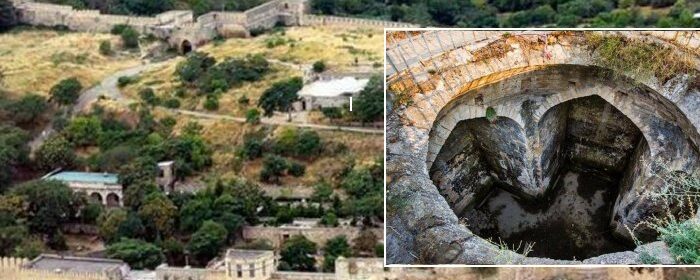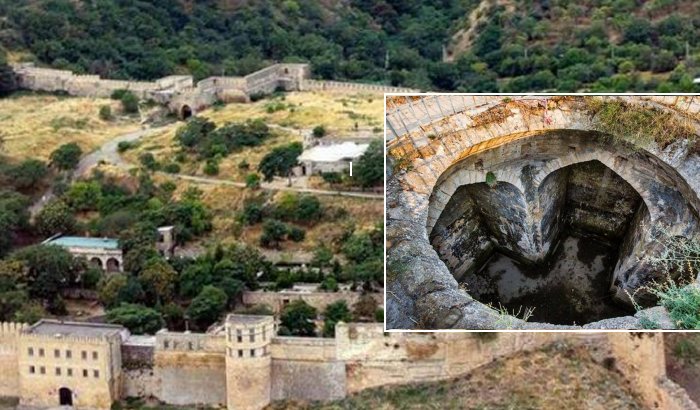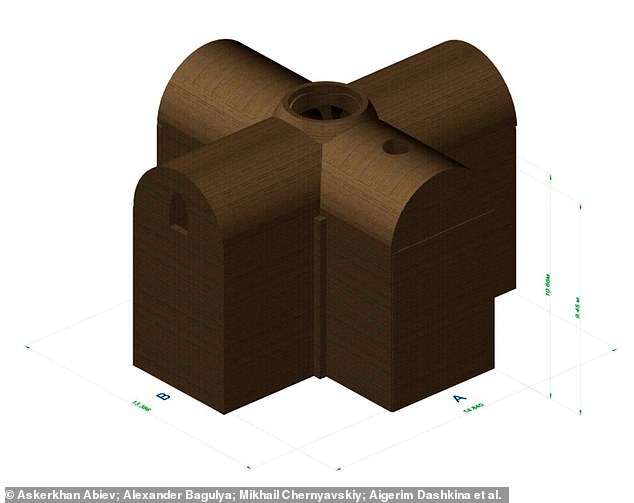Nuclear Physicists Locate What May Be The Oldest Church In The World

Nuclear Physicists Locate What May Be The Oldest Church In The World
A team of nuclear physicists, using cutting-edge radiography, have found what they believe to be one of the oldest churches in the world located deep within the medieval fortress of Naryn-Kala, in the ancient city of Derbent, Dagestan, according to Newsweek:
“Archaeologists have known about the building for some time and have long suspected it was once used as a Christian temple.
“However, most of the 40-foot building is hidden underground, with just a dome visible above the surface, and researchers have not been able to access it — excavating could endanger the UNESCO site. “The building is located in the northwest of the fortress and dates to around 300 A.D. It was buried 400 years later when the Arabs captured the city.”

Religious historians believe the ancient church was used for one of three purposes: As a Zoroastrian fire temple, a reservoir, or a citadel. The way the church structure was discovered is a testament to modern physics,
The Daily Mail notes:
“Physicists led by Natalia Polukhina of the Russian Academy of Sciences tested a scanning technique called muon tomography — which is similar in principle to the CT scans used in hospitals — on the structure between May and September 2018.
“The team placed several muon detectors in the mostly-buried building at depths of around 33 feet (10 metres) from the surface of the fortress’ interior — with each containing ‘nuclear emulsion’, the muon equivalent of a photographic plate.
“From the images collected by the emulsion, the researchers have been able to create a three-dimensional reconstruction of what the outside of the structure would have looked like before it was buried.”

The outside of the church building was cross-shaped and orientated north-south. While some have suggested the building might have been nothing more than a water tank, study author Natalia Polukhina doesn’t think that’s plausible:
“It seems very strange to me to interpret this building as a water tank. In the same fortress of Naryn-Kala, there is an equal underground structure of 10 meters depth, and it really is a tank.
“This is just a rectangular building. The unusual building, in which we have put our detectors, has the shape of a cross, oriented strictly to the sides of the world, one side is two meters longer than the others.”
Muon tomography, which helped locate the Russian church structure, has been used before:
“In 2017, researchers revealed the discovery of huge and previously unknown chamber — dubbed ‘the big void’ — located within the Great Pyramid of Giza in Egypt.
“‘Although there is currently no information about the intended purpose of this void, these findings show how modern particle physics can shed new light on the world’s archaeological heritage,’ the team had concluded in their Nature paper.”
As incredible as the discovery of the Derbent church is, there are still many more questions which must be answered, Dr. Polukhina admits:
“Currently, there are more questions than answers.”
Despite those questions, the team of researchers know exactly how they plan to try and get the answers they’re seeking:
“Although the results of the study are revealing, the research was only intended as a preliminary step — one to determine the best optical exposure and the optimum configuration of detectors for scanning this particular building.
“With this initial step a resounding success, however, the researchers are now planning a full-scale scan of the building which will allow them to determine the full contours of the buried structure.
“To improve the final scan of the structure, the researchers will install additional detectors on the western slope of the fortress.”